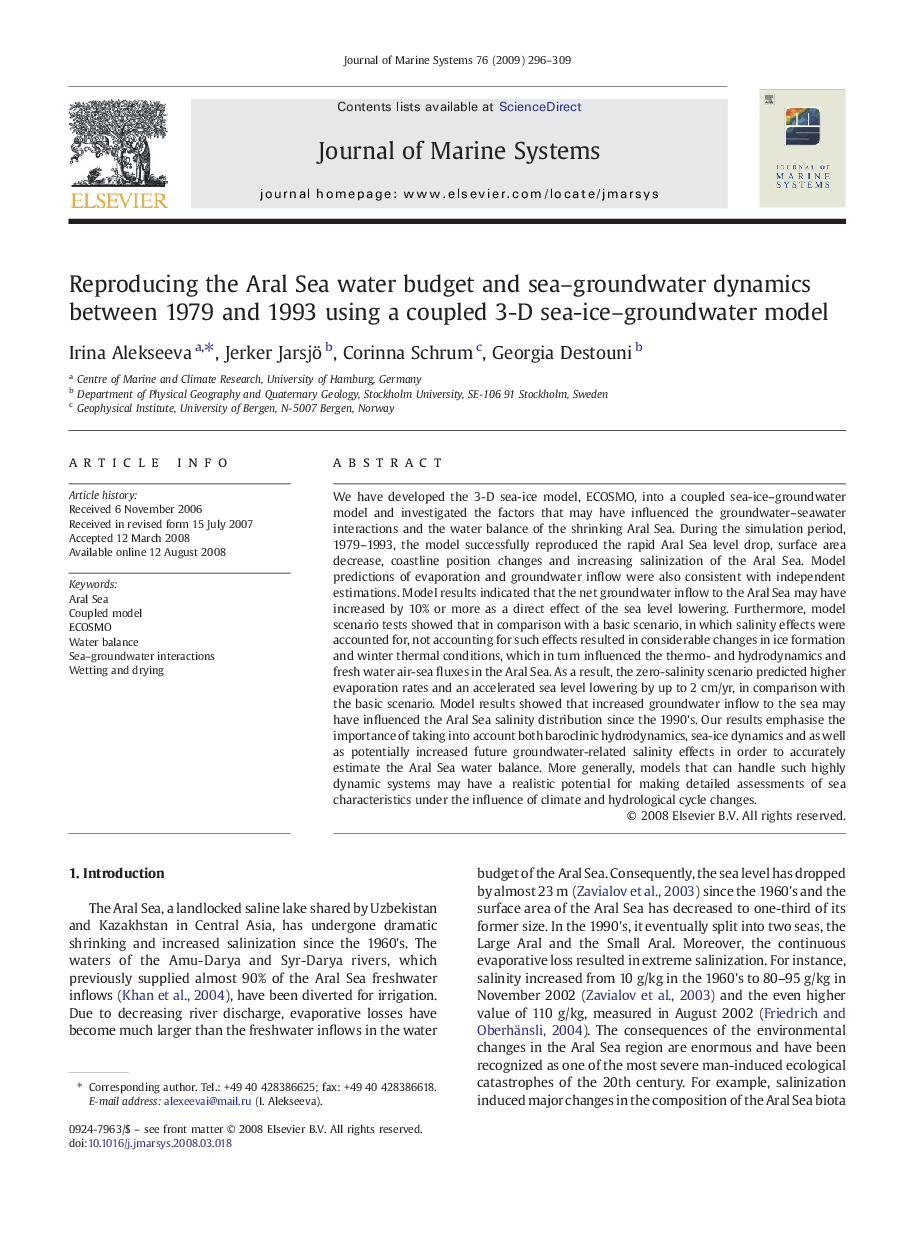| Article ID | Journal | Published Year | Pages | File Type |
|---|---|---|---|---|
| 4548815 | Journal of Marine Systems | 2009 | 14 Pages |
We have developed the 3-D sea-ice model, ECOSMO, into a coupled sea-ice–groundwater model and investigated the factors that may have influenced the groundwater–seawater interactions and the water balance of the shrinking Aral Sea. During the simulation period, 1979–1993, the model successfully reproduced the rapid Aral Sea level drop, surface area decrease, coastline position changes and increasing salinization of the Aral Sea. Model predictions of evaporation and groundwater inflow were also consistent with independent estimations. Model results indicated that the net groundwater inflow to the Aral Sea may have increased by 10% or more as a direct effect of the sea level lowering. Furthermore, model scenario tests showed that in comparison with a basic scenario, in which salinity effects were accounted for, not accounting for such effects resulted in considerable changes in ice formation and winter thermal conditions, which in turn influenced the thermo- and hydrodynamics and fresh water air-sea fluxes in the Aral Sea. As a result, the zero-salinity scenario predicted higher evaporation rates and an accelerated sea level lowering by up to 2 cm/yr, in comparison with the basic scenario. Model results showed that increased groundwater inflow to the sea may have influenced the Aral Sea salinity distribution since the 1990's. Our results emphasise the importance of taking into account both baroclinic hydrodynamics, sea-ice dynamics and as well as potentially increased future groundwater-related salinity effects in order to accurately estimate the Aral Sea water balance. More generally, models that can handle such highly dynamic systems may have a realistic potential for making detailed assessments of sea characteristics under the influence of climate and hydrological cycle changes.
